40 disklabel type dos
Fdisk command to create and delete partition in Linux Guide 2021 Print partition table: You want print all partition table of hard disk, then you must be on command mode of specific hard disk say /dev/sda. Use following command to select the hard disk and get command mode. #fdisk /dev/sda. OR. $ sudo fdisk /dev/sda. From the command mode, enter 'p' instead of 'm' as we did earlier. BSD disklabel - Wikipedia In BSD-derived computer operating systems and in related operating systems such as SunOS, a disklabel is a record stored on a data storage device such as a hard disk that contains information about the location of the partitions on the disk. Disklabels were introduced in the 4.3BSD-Tahoe release. Disklabels are usually edited using the disklabel utility. In later versions of FreeBSD, this was renamed as bsdlabel.
A beginner's guide to disks and disk partitions in Linux The Disklabel type: gpt line confirms that GPT is in use. Figure 4: This output of fdisk -l shows GPT in use. Figure 5 was taken from a Fedora Linux installation. As in Figure 4, the Disklabel type: dos line confirms what partitioning scheme is in use. In this case, it is MBR.

Disklabel type dos
Understanding linux fdisk utility - The Geek Diary Using the fdisk Utility. The fdisk utility also provides an interactive interface for manipulating the partition table of a disk device. # fdisk [device_name] Command (m for help): Basic fdisk commands include: - d: Delete a partition. - l: List the known partition types. - m: Print the available commands. - n: Add a new partition. disklabel(8) - OpenBSD manual pages The disk label contains information about disk characteristics (size, type, etc.) and the partition layout, stored on the disk itself. It is used by the operating system to optimize disk I/O and locate the filesystems resident on the disk. disklabel supports 15 configurable partitions, 'a' through 'p', excluding 'c'. Preparing the disks - Gentoo Wiki Type o to create a new MBR disklabel (here also named DOS disklabel) on the disk; this will remove all existing partitions. Command (m for help): o Created a new DOS disklabel with disk identifier 0xe04e67c4.
Disklabel type dos. [SOLVED] Unrecognised disk label - gparted - LinuxQuestions.org Disk /dev/sda: 232.9 GiB, 250059350016 bytes, 488397168 sectors Units: sectors of 1 * 512 = 512 bytes Sector size (logical/physical): 512 bytes / 512 bytes I/O size (minimum/optimal): 512 bytes / 512 bytes Disklabel type: dos Disk identifier: 0x2299b4f8 Device Boot Start End Sectors Size Id Type /dev/sda1 * 2048 484472831 484470784 231G 83 Linux /dev/sda2 484474878 488396799 3921922 1.9G 5 Extended /dev/sda5 484474880 488396799 3921920 1.9G 82 Linux swap / Solaris Disk /dev/sdb: 14.6 GiB ... Create Boot Partition Layout for a Raspberry Pi - The Tech Journal Open fdisk on your card. fdisk /dev/sda Press "n" to create a partition. Press "p" to make it a primary partition. Press "1" to make it the first partition in the table. Press to accept the default on start sector. Type +size to choose the size. In my case I want 1GB, so I'll type "+1G". After it's created, press "a" to make it bootable. partition - Changing label type in Arch Linux cfdisk - Unix & Linux ... Run fdisk -l. You should get all of your storage devices. Find the one you want to partition. It should be something like /dev/nvme0n1 or /dev/sda but your knowledge may vary. Once you find it run fdisk . E.x. /fdsik /dev/sda. You should now see something like this. Welcome to fdisk (util-linux 2.35.2). Tutorial - Create and use disks for scale sets with Azure CLI - Azure ... Disk /dev/sdc: 64 GiB, 68719476736 bytes, 134217728 sectors Units: sectors of 1 * 512 = 512 bytes Sector size (logical/physical): 512 bytes / 512 bytes I/O size (minimum/optimal): 512 bytes / 512 bytes Disklabel type: dos Disk identifier: 0xa47874cb Device Boot Start End Sectors Size Id Type /dev/sdc1 2048 134217727 134215680 64G 83 Linux Disk /dev/sdd: 128 GiB, 137438953472 bytes, 268435456 sectors Units: sectors of 1 * 512 = 512 bytes Sector size (logical/physical): 512 bytes / 512 bytes I ...
how to list all hard disks in linux from command line Some of the commonly used types of disk are SCSI (Small Computer System Interface), ATA or IDE (Advanced Technology Attachment), SATA (Serial ATA), SAS (Serial Attached SCSI) among others. As I mentioned, the physical hard disk is assigned an unique id at startup. Format USB drives In FAT32 Or NTFS Format In Arch Linux Disk /dev/sda: 465.8 GiB, 500107862016 bytes, 976773168 sectors Units: sectors of 1 * 512 = 512 bytes Sector size (logical/physical): 512 bytes / 512 bytes I/O size (minimum/optimal): 512 bytes / 512 bytes Disklabel type: dos Disk identifier: 0x4c986a38 Device Boot Start End Sectors Size Id Type /dev/sda1 2048 206847 204800 100M 83 Linux /dev/sda2 4401152 976773167 972372016 463.7G 83 Linux /dev/sda3 206848 4401151 4194304 2G 82 Linux swap / Solaris Partition table entries are not in disk order. Partitioning - ArchWiki - Arch Linux In the MBR partition table (also known as DOS or MS-DOS partition table) there are 3 types of partitions: Primary Extended Logical Primary partitions can be bootable and are limited to four partitions per disk or RAID volume. sfdisk(8) - Linux manual page - Michael Kerrisk -X, --label type Specify the disk label type (e.g., dos, gpt, ...). If this option is not given, then sfdisk defaults to the existing label, but if there is no label on the device yet, then the type defaults to dos. The default or the current label may be overwritten by the "label: " script header line.
fdisk: manipulate disk partition table - Linux Man Pages (8) In a DOS-type partition table the starting offset and the size of each partition is stored in two ways: as an absolute number of sectors (given in 32 bits), and as a Cylinders/Heads/Sectors triple (given in 10+8+6 bits). The former is OK -- with 512-byte sectors this will work up to 2 TB. Managing partitions in Linux with fdisk | Enable Sysadmin Changes will remain in memory only until you decide to write them. Be careful before using the write command. Does not contain a recognized partition table. Created a new DOS disklabel with disk identifier 0x569c5370. Use of disklabel, MBR and GPT - UnitedBSD Disklabel is an alternative, and not an integration, to MBR. In the case of an amd64 NetBSD installation inside a PC/DOS disk, the disklabel is placed inside the MBR primary partition dedicated to NetBSD, in the second block (and the first block is used for the NetBSD bootloader). 1190726 - Fdisk created a new DOS disklabel in the wrong partition. Device does not contain a recognized partition table. The size of this disk is 5.5 TiB (6001174060544 bytes). DOS partition table format can not be used on drives for volumes larger than 2199023255040 bytes for 512-byte sectors. Use GUID partition table format (GPT). Created a new DOS disklabel with disk identifier 0x7c9f38a4. ******<*********!!!
"fdisk -l" output: what are Disk label type" and "Disk identifier" The disk label type is the type of Master Boot Record. See . The disk identifier is a randomly generated number stuck onto the MBR. In terms of tools for looking at disks, fdisk is on its way to being deprecated if it isn't already so. parted is the replacement for fdisk and gparted can be used to provide a graphical interface to parted (although certainly other tools exist as well).
disklabel(8) - NetBSD Manual Pages On systems that expect to have disks with MBR partitions (see fdisk (8) ) disklabel will find, and update if requested, labels in the first 8k of type 169 (NetBSD) MBR labels and within the first 8k of the physical disk. On other systems disklabel will only look at the start of the disk. The offset at which the labels are written is also system ...
Fdisk Command in Linux (Create Disk Partitions) | Linuxize Disk /dev/sdb: 298.9 GiB, 320072933376 bytes, 625142448 sectors Disk model: nal USB 3.0 Units: sectors of 1 * 512 = 512 bytes Sector size (logical/physical): 512 bytes / 4096 bytes I/O size (minimum/optimal): 4096 bytes / 4096 bytes Disklabel type: gpt Disk identifier: F8365250-AF58-F74E-B592-D56E3A5DEED1 Device Start End Sectors Size Type /dev/sdb1 2048 209717247 209715200 100G Linux filesystem /dev/sdb2 209717248 625142414 415425167 198.1G Linux filesystem
How to rename or label a disk drive - Computer Hope In the Properties window, on the General tab, type a new name in the Label box (A), click Apply (B), and then click OK (C). Windows 3.x, MS-DOS, and Windows command line. To change the name of a disk drive from an MS-DOS prompt, use the label command. Type the word label. Type the drive letter you want to rename. Type the new name for the drive.
How many sectors does a hard disk have? - Quora Answer (1 of 6): The capacity of the disk (in GB) * 1024 * 1024 * 2. For example, a 1TB Disk will have 1024 * 1024 * 1024 * 2 sectors = 2147483648 sectors. A disk typically has each sector of size 512 bytes. Some recent models of disks have 4KB sector size. the size of a disk sector in a linux ...
How to Use mkfs Command in Linux [For Disk Formatting] [email protected]:~$ sudo fdisk -l Disk /dev/sda: 25 GiB, 26843545600 bytes, 52428800 sectors Disk model: VBOX HARDDISK Units: sectors of 1 * 512 = 512 bytes Sector size (logical/physical): 512 bytes / 512 bytes I/O size (minimum/optimal): 512 bytes / 512 bytes Disklabel type: dos Disk identifier: 0x3c62c49c Device Boot Start End Sectors Size Id Type /dev/sda1 * 4096 1023998 1019903 498M 83 Linux /dev/sda2 1024000 44036094 43012095 20.5G 83 Linux /dev/sda3 44036096 52424702 8388607 4G 82 ...
How to resize/extend a btrfs formatted root partition - SUSE Disklabel type: dos Disk identifier: 0x000dd878 Device Boot Start End Sectors Size Id Type /dev/sda1 2048 8402943 8400896 4G 82 Linux swap / Solaris /dev/sda2 * 8402944 41943039 33540096 16G 83 Linux Execute the actions as displayed above to remove and recreate the partition table, write the changes and receive the busy message from the kernel. ...
How to list, create, delete partitions on MBR and GPT disks - Linux Config # fdisk -l /dev/sdb Disk /dev/sdb: 2 GiB, 2147483648 bytes, 4194304 sectors Units: sectors of 1 * 512 = 512 bytes Sector size (logical/physical): 512 bytes / 512 bytes I/O size (minimum/optimal): 512 bytes / 512 bytes Disklabel type: dos Disk identifier: 0x29ccc11b Device Boot Start End Sectors Size Id Type /dev/sdb1 2048 4194303 4192256 2G 83 Linux
Linux: Mount Disk Partition Using LABEL - nixCraft H ow do I mount the filesystem (disk partition) using the filesystem label on the ext3/ext4 file system located on USB disk or hard disk under Linux operating systems? The e2label command will display or set the filesystem label. The mount command has the option to mount partition that has the specified label. To see your current label type the following command:
How to Change Linux Partition Label Names on EXT4 / EXT3 / EXT2 and Swap 1. e2label or tune2fs. The commands e2label or tune2fs used for changing label of ext2, ext3 and ext4 type partitions. # e2label /dev/sda1 ROOT OR # tune2fs -L ROOT_PART /dev/sda1. Here, ROOT and ROOT_PART are the labels to be added to /dev/sda1 which is ext4 formatted partition.
Preparing the disks - Gentoo Wiki Type o to create a new MBR disklabel (here also named DOS disklabel) on the disk; this will remove all existing partitions. Command (m for help): o Created a new DOS disklabel with disk identifier 0xe04e67c4.
disklabel(8) - OpenBSD manual pages The disk label contains information about disk characteristics (size, type, etc.) and the partition layout, stored on the disk itself. It is used by the operating system to optimize disk I/O and locate the filesystems resident on the disk. disklabel supports 15 configurable partitions, 'a' through 'p', excluding 'c'.
Understanding linux fdisk utility - The Geek Diary Using the fdisk Utility. The fdisk utility also provides an interactive interface for manipulating the partition table of a disk device. # fdisk [device_name] Command (m for help): Basic fdisk commands include: - d: Delete a partition. - l: List the known partition types. - m: Print the available commands. - n: Add a new partition.







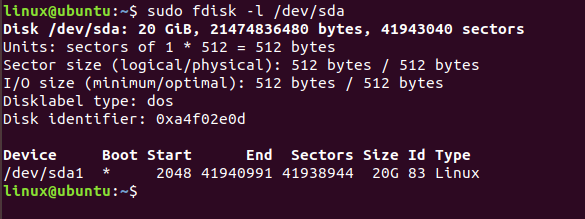

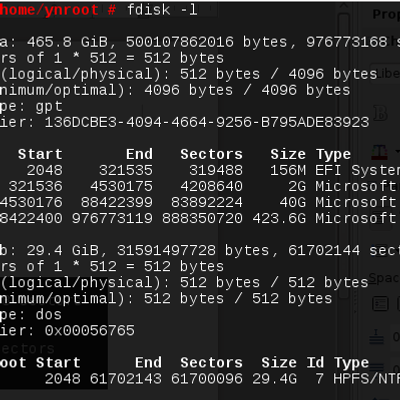






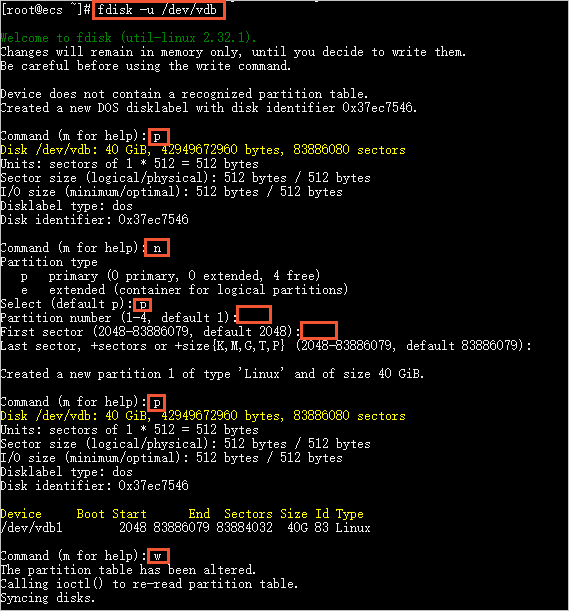
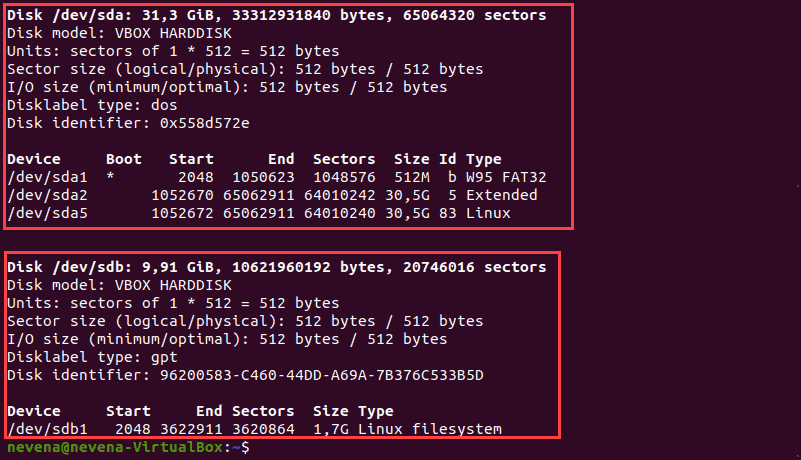





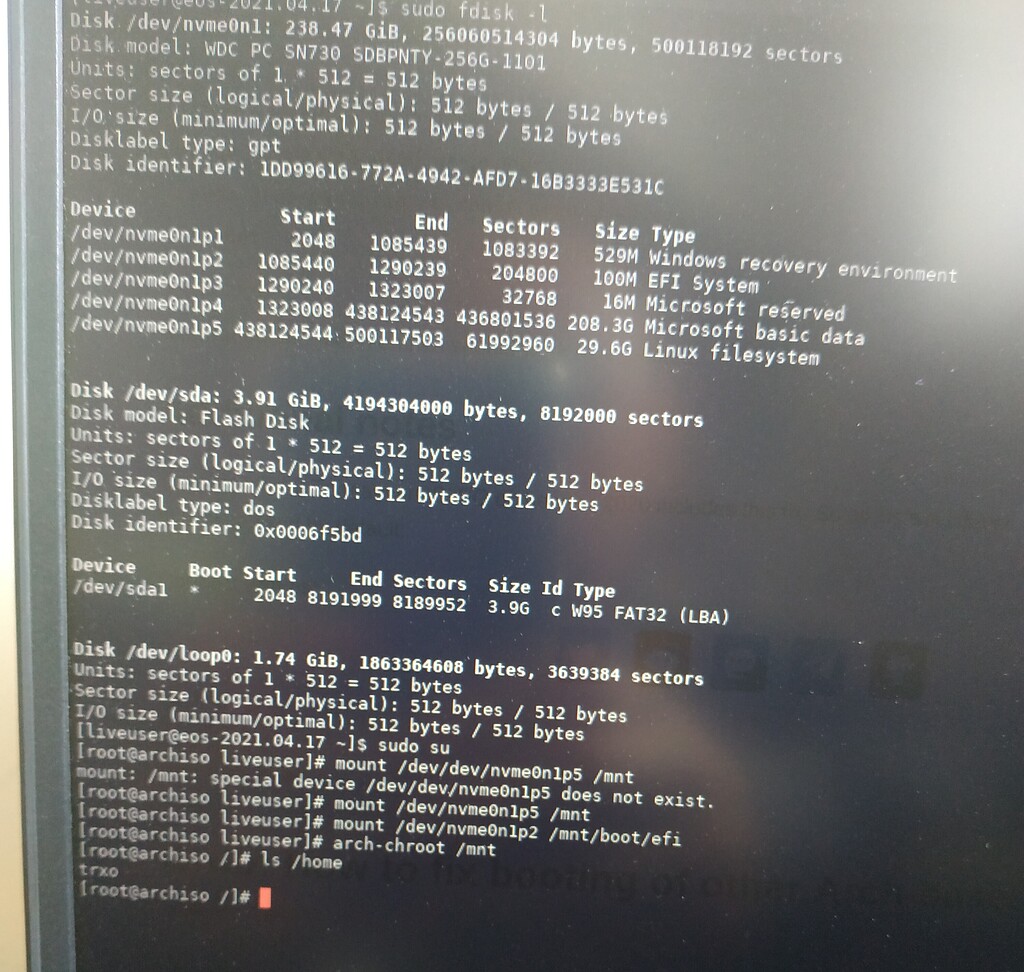


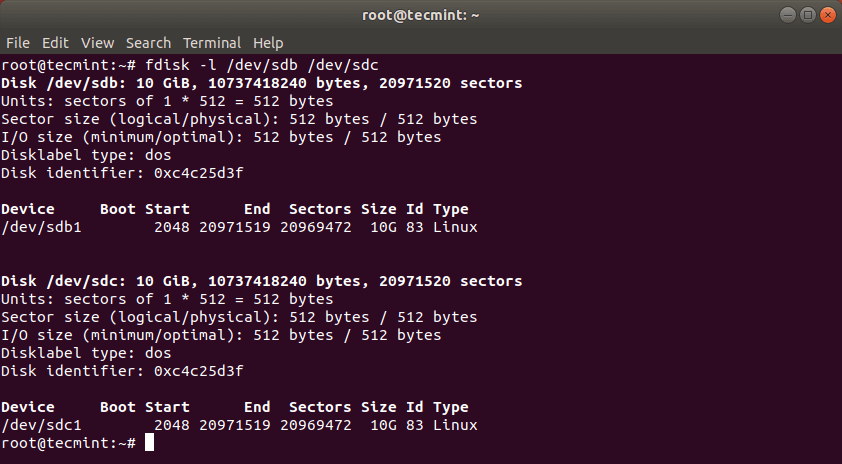


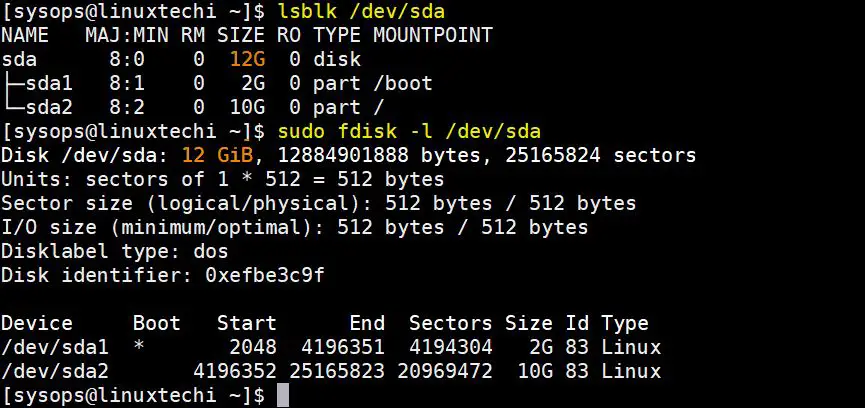



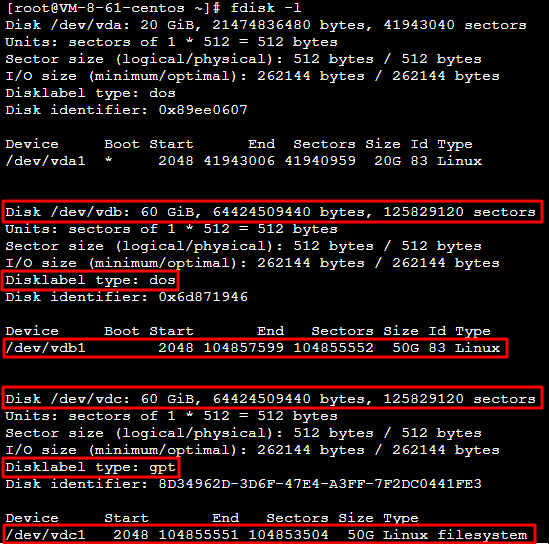
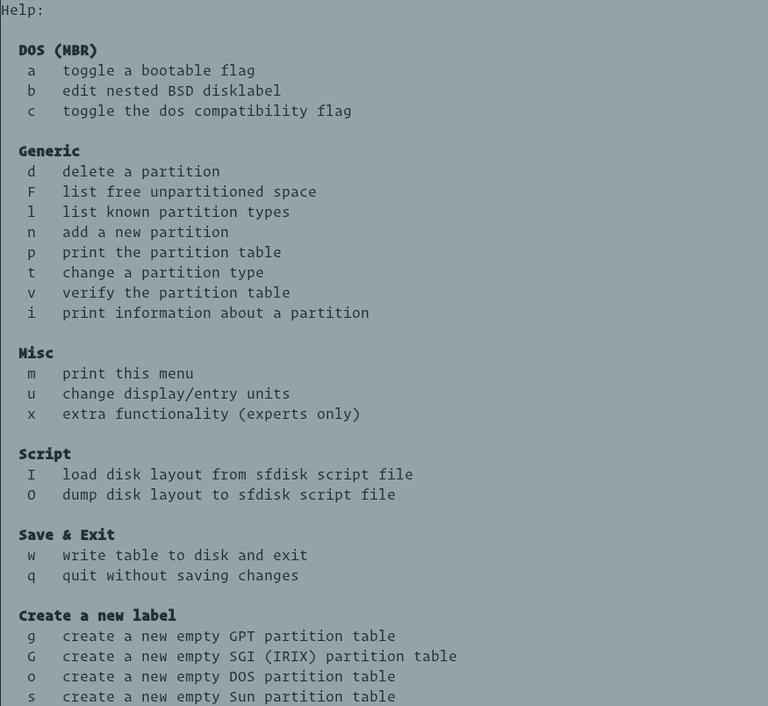
Post a Comment for "40 disklabel type dos"